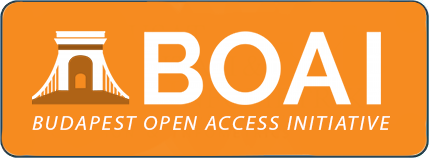MEDIA DISCOURSE IN QURANIC NARRATIVES: AN ANALYTICAL STUDY OF THE STORY OF PROPHET SHU‘AYB
الخطاب الإعلامي في القصص القرآني: دراسة تحليلية في قصة نبي الله شعيب عليه السلام
DOI:
https://doi.org/10.64757/alqanatir.2025.346/1275Keywords:
Media, Discourse, Narratives, Rhetorical, PersuasionAbstract
The Quran transcends its role as a primary source of legislation and ethics in Islam to present a comprehensive media discourse characterized by precision, persuasion, and powerful impact. This discourse is clearly manifested in the stories of the prophets through their discourse. Media discourse is defined as the method of transmitting information, ideas, and messages from the sender to the receiver using various communicative means, including eloquent language and rhetorical techniques. The research problem lies in addressing the following questions: How does the Quran employ media discourse in the story of Prophet Shu‘ayb (peace be upon him) to convey its religious and social message? What rhetorical and media strategies are used to achieve influence and persuasion? Therefore, this study seeks to provide an analytical perspective on the unique media discourse in the Quran by examining the story of Prophet Shu‘ayb and his dialogue with his people regarding monotheism, the warning against polytheism, the prohibition of fraud in weights and measures. Additionally, the study aims to identify the key rhetorical and linguistic techniques employed in this Quranic discourse, which continue to serve as a source of inspiration for preachers today. The research adopts a descriptive-analytical methodology to examine the Quranic texts related to the story and to analyse their linguistic and rhetorical strategies. Researchers have found that Prophet Shuayb's discourse to his people skilfully combined emotional and rational appeals, employing both motivational and cautionary approaches. It was characterized by message clarity, logical reasoning, gradual progression, and adaptability in message delivery. Among the persuasive techniques utilized were: reminders of divine blessings, rational arguments, motivational and deterrent elements, and strategic repetition for emphasis. The study recommends more efforts to further explore the merits and characteristics of Quranic media discourse in other Quranic narratives. This will contribute to developing a comprehensive framework for understanding Quranic communicative approaches.
ملخص البحث
يتجاوز القرآن الكريم كونه مصدرًا رئيسًا للتشريع والأخلاق في الإسلام إلى تقديم خطاب إعلامي متكامل يتميز بالدقة والإقناع وقوة التأثير. ويتجلى هذا الخطاب بوضوح في قصص الأنبياء من خلال خطاباتهم. يُعرَّف الخطاب الإعلامي بأنه أسلوب نقل المعلومات والأفكار والرسائل من المرسل إلى المتلقي باستخدام وسائل اتصالية متعددة، تتضمن اللغة الفصيحة والأساليب البلاغية المختلفة. وتكمن مشكلة البحث في الإجابة عن تلك التساؤلات حول كيفية توظيف القرآن الكريم للخطاب الإعلامي في قصة نبي الله شعيب عليه السلام لإيصال رسالته الدينية والاجتماعية، ونوعية تلك الأساليب البلاغية والإعلامية التي استخدمها لتحقيق التأثير والإقناع. لذلك يسعى هذا البحث إلى تقديم رؤية تحليلية للخطاب الإعلامي الفريد في القرآن الكريم من خلال دراسة قصة نبي الله شعيب -عليه السلام- وحواره مع قومه حول التوحيد، والتحذير من الشرك، والنهي عن الغش في المكيال والميزان، وما يترتب على ذلك من عقاب وعذاب إلهي. كما يهدف إلى الوقوف على أبرز الوسائل البلاغية واللغوية التي استخدمها القرآن الكريم في خطابه الإعلامي، مما جعله مصدر إلهام مستمر للدعاة والخطباء في العالم الإسلامي حتى اليوم. يعتمد البحث على المنهج الوصفي التحليلي لدراسة النصوص القرآنية المرتبطة بالقصة، وتحليل أساليبها اللغوية والبلاغية. وجد الباحثون أن خطاب شعيب عليه السلام لقومه يجمع بين العاطفة والمنطق، والترغيب والترهيب، واتسم بوضوح الرسالة، والعقلانية والتدرُّج والمرونة في توصيل الرسالة إلى قومه. وكان من بين أساليب الإقناع التي اعتمد عليها: التذكير بنعم الله، والحجج العقلية، والترغيب والترهيب، وأسلوب التكرار بغرض التأكيد. يوصي الباحثون بضرورة مواصلة الجهود التي تسعى للكشف عن مزايا وخصائص الخطاب الإعلامي القرآني في مواضع أخرى من القرآن الكريم لبناء صورة متكاملة عن الخطاب الإعلامي القرآني بصورة شاملة
Downloads
References
Al-Qaradawy, Yusuf. (2000). Kaifa Nata’amal Ma’a al-Quran al-Azim. 3ed edition. Al-Qahiarah. Dar al-Shruq.
Al-Tobary, Muhammad Bin Jareer. (2001). Jami’ al-Bayan ‘an Ta’wil Aay al-Quran. Tahqiq: Ahmad Shakir. Al-Qahirah: Dar al-Ma’arif.
Al-Zuhaily, Wahbah. (1991). Al-Tafsir al-Munir fi al-Aqidah wal-Shari’ah wal-Manhaj. Lubnan, Beirut. 1st edition. Dar al-Fikr al-Mu’asir.
Ibnu Kathir, Isma’il Bin Umar. (1998) Tafsir al-Quran al-Azim. Tahqiq: Samy Alsalamah. Al-Riyadh: Dar Tibah.
Jabbarah, Sofaa. (2012). al-Khitab al-I’lamy Baina al-Nazoriyyah wal-Tahlil. 1st edition. Oman: Dar Usamah Linnashr wal-Tawzi’.
Shoman, Muhammad. (2007). al-Khitab al-I’lamy: Uthor Nadhoriyyah wanamadhij Tatbiqiyyah. 1st edition. Al-Qahirah: al-Ddar al-Misriyyah al-Lubnanyyah.
Journal
Abdelhamid, I. Y., & Yahaya, H. (2023). The Role of the Cultural Aspect in Learning Arabic for Non-native Speakers: Egyptian Culture as An Example. Proceedings of International Conference on Islamic Civilization and Humanities, 1, 602-608. https://proceedings.uinsa.ac.id/index.php/iconfahum/article/view/1313
Abdul Jabbar Al-Shamiri, H. E. . (2022). The Media’s Coverage Of Terrorist Crimes And The Effort Of Islam’s Youth To Expose The Truth: Al-Qanatir: International Journal of Islamic Studies, 26(1), 158–183. Retrieved from https://al-qanatir.com/aq/article/view/437
Abdullah, Ahmad Tolib., Huda, Ahmad Al-Hamzy. (2022). The language of contemporary media discourse - reality and hope. Journal of the College of Basic Education, 5(SI), 362-383. https://doi.org/10.35950/cbej.v5iSI.5758
Ali, M. S., & Ajwah, A. S. (2022). Al-tahlil al-naqdi lil-khitab al-i‘lami: Al-mafhum, al-usus al-nazariyyah wa madakhil al-tahlil. Al-Majallah al-‘Ilmiyyah li-Buhuth al-‘Alaqat al-‘Ammah wa al-I‘lan, 24, 581–604. doi: 10.21608/sjocs.2022.294645
Kanaker, O., Abdul Rahim, N. R., & Ibrahim, I. (2024). Exploring Prominent Qur’anic Discourse Styles (QDS) In The Story Of Prophet Yusuf And Incorporating Them Into Media Content . Al-Qanatir: International Journal of Islamic Studies, 33(6), 245–256. Retrieved from https://al-qanatir.com/aq/article/view/954
Kevin Howley. (2008). Analysing media discourses. Social Semiotics ,18(3), 273-276. https://doi.org/10.1080/10350330802217048
Moll Y. (2020). The Idea of Islamic Media: The Qur’an and the Decolonization of Mass Communication. International Journal of Middle East Studies. 52(4):623-642. doi:10.1017/S0020743820000781
Othman, M. I. H., Abas, U.-H. B., Nazmi, M. Z. M., & Abdelhamid, I. Y. (2022). Manifestations of Arabic Language Creativity (A study in Building and Meaning). International Journal of Academic Research in Business and Social Sciences, 12(12), 207 – 214.
Othman, M. I. H., Abdelhamid, I. Y., Nazmi, M. Z. M., & Abas, U.-H. B. (2023). The Linguistic and Semantic Coherence of Surah Al-Fatihah. International Journal of Academic Research in Business and Social Sciences, 13(6), 480 – 488.
Ali, M.S. and Ajwah, A.S., (2022). Al-Tahlil al-Naqd li al-Khitab al-I‘lamy: al-Mafhum, al-Usus al-Nazariah wa Madahkhil al-Tahlil. Public Relation and Advertising Research, 24. 581-604. https://doi.org/10.21608/sjocs.2022.294645
Published
How to Cite
Issue
Section
License
Copyright (c) 2025 IBRAHIM YOUSSEF ABDELHAMID, Ragab Ibrahim Ahmed Awad, Hazrati Binti Yahaya BINTI YAHAYA, Nor Zahidah Bniti Ahmad

This work is licensed under a Creative Commons Attribution 4.0 International License.









